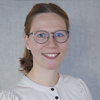The Nordic countries accept many immigrants – not least as a result of the war in Ukraine. This means that there is considerable demand for learning one of the Nordic languages as a second language. Learning the language, and especially oral language skills, is crucial for the immigrants to become part of the Nordic societies.
Immigrants with poor language skills are at risk of social exclusion, have difficulty connecting with the local population, and find it hard to settle in the new country. For immigrant children, it’s also important to learn the language of the new country in order to be able to use the language in kindergarten, at school and with their peers.

Games increase children’s motivation to learn languages
In order to speed up learning and avoid high costs for individual in-person language coaching, new techniques for language teaching are needed. The NordForsk-funded project “Technology-enhanced foreign and second-language learning of Nordic languages (TEFLON)” focuses precisely on that. They’re researching how to create digital games to teach immigrant children to speak Finnish, Norwegian and Swedish.
“We’re developing games because they can increase children’s motivation to learn the Nordic languages. Children often enjoy playing, which is why we believe that digital language-learning games can be particularly attractive to immigrant children.
We aren’t turning language learning into a game, but we’re turning games into language-learning.
The idea is to develop a speech technology component that can be added into various fun games instead of building completely new games for language learning. The games are not a shortcut to learning languages. It’s still necessary to practice diligently because it takes both time and effort to learn a completely new language,” says Mikko Kurimo.
He’s leading the TEFLON project and is a Professor at the Department of Information and Communications Engineering at Aalto University in Finland.
Kurimo points out that although the games are aimed at children in particular, adults can also play them. Most immigrants are moving here for work related reasons, and they are needed not just in high technology professions, but also in many other fields while our Nordic population is ageing.
“We are not only developing the games for learning new languages, but also for native children who have various speech sound disorders. They also need a lot of practise to learn to speak fluently and correctly,” he says.
The games can supplement classroom-based language teaching, because they can be used individually, and they can be used regardless of where you’re located or the time zone you are in, Mikko explains and adds:
“Digital games make language learning possible even before the migration journey takes place. On top of that, there’s an urgent need for digital solutions in all learning, as we’ve seen during the coronavirus pandemic when schools closed in several Nordic countries. With digital games, language teaching can take place at home.”
Interdisciplinary approach
The researchers in the project will initially build versions of the game for three Nordic languages – Finnish, Swedish and Norwegian. The games will have automatic speech recognition enabled and can assess the children’s speech and give them feedback to enhance learning. This requires advanced speech technology which can not only assess a foreign language, but also assess children’s speech.
“We do not build just any word repetition games but develop fast automatic pronunciation assessment methods using the latest machine learning algorithms and large unsupervised speech models. Our aim is to build automatic speech recognition systems that can recognise language learners' and particularly children's speech and give feedback based on the pronunciation and fluency.”
To develop the technology behind the games, the research project is being pursued by an interdisciplinary team with a background in engineering, cognitive neuroscience, psycholinguistics, speech-language pathology and language training. The participants in the project are researchers from Finland, Norway and Sweden.
Find out more about NordForsk’s interdisciplinary research projects.






